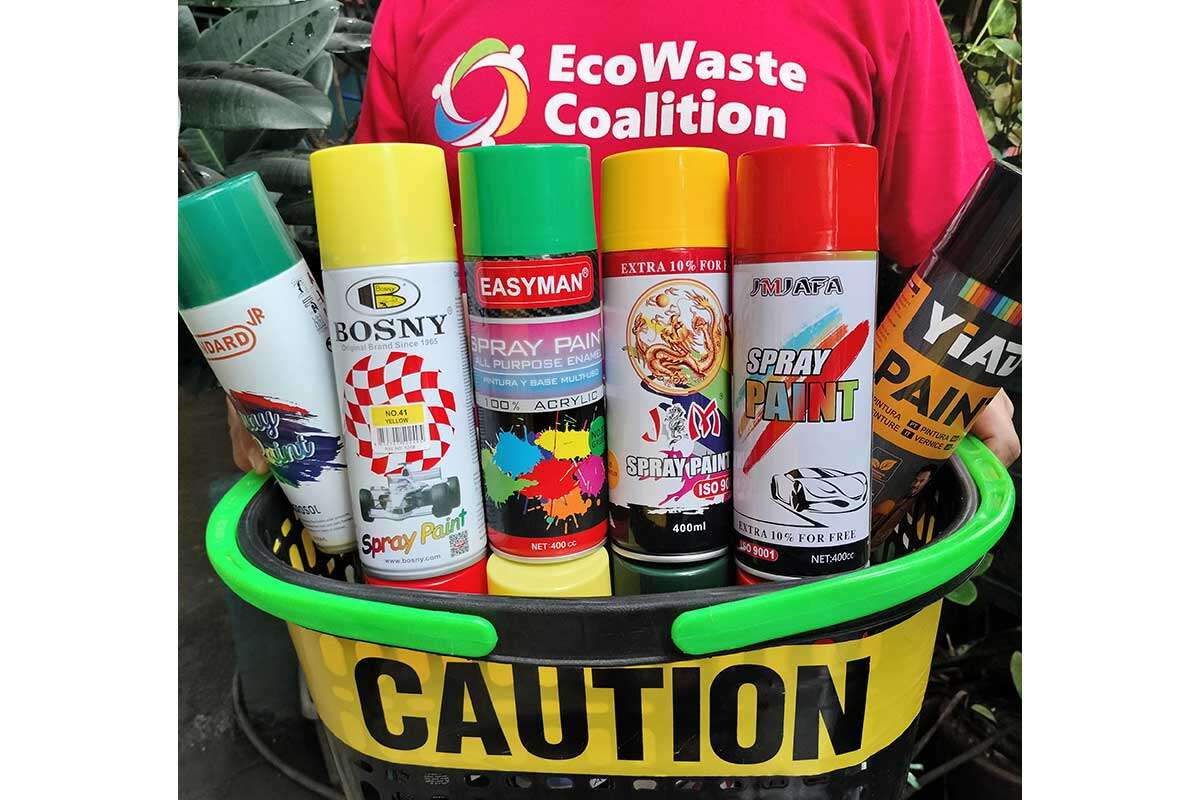By Ecowaste Coalition
Copyright journal

Quezon City. The toxics watchdog group EcoWaste Coalition has submitted 20 samples of imported spray paints sold locally to a private laboratory for confirmatory lead content analyses.
The laboratory test results for the 20 analyzed paints will be revealed next month as part of the group’s commemoration of the International Lead Poisoning Prevention Week (ILPPW) organized by the Global Alliance to Eliminate Lead Paint, a joint initiative co-led by the United Nations Environment Programme (UNEP) and the World Health Organization (WHO).
Prior to sending the samples to the laboratory, the 20 samples were examined for lead using a handheld Olympus Vanta M Series X-Ray Fluorescence (XRF) analyzer, an effective screening device for determining the lead content of paints.
Based on the XRF screening it conducted, the group found the samples laden with varying levels of lead with 12 of them exceeding 10,000 parts per million (ppm) of lead. DENR A.O. 2013-24 banned lead in paint manufacturing and established a maximum limit of 90 ppm for lead in all paint categories.
In an apparent case of mislabeling, 13 of the 20 lead-containing paints deceptively carried the “No Pb” pictogram, which is supposed to indicate that a product contains no lead (plumbum is the Latin word for lead for which Pb is derived).
Among those found with extremely high concentrations of lead were Easyman Spray Paint All Purpose Enamel (yellow, over 100,000 ppm; orange, 84,900 ppm; and green, 65,600 ppm); counterfeit Bosny Spray Paint (yellow, 89,400 ppm); Standard JR Spray Paint (fresh green, 77,800 ppm); JM Spray Paint (medium yellow, 75,000 ppm); and JMJAFA Spray Paint (Jialing red, 50,640 ppm).
The detection of lead in excess of 90 ppm in the 20 paint samples is a violation of DENR A.O. 2023-24, or the Chemical Control Order (CCO) banning the use of lead as a pigment, drying catalyst, anti-corrosive agent or for some other purposes in the production of paints, the EcoWaste Coalition emphasized.
The said CCO gave manufacturers three years from 2013 to 2016 to remove and replace lead as an ingredient in decorative paints. The ban on lead-containing decorative paints took effect on January 1, 2017.
On the other hand, lead in industrial paints was eliminated after a longer transition period of six years from 2013 to 2019. The ban on lead-containing industrial paints became effective on January 1, 2020.
Lead in paint is a major source of childhood lead exposure, which can harm the brain, the central nervous system and other systems of the human body. Exposure to lead early in life can result in lower intelligence quotient (IQ), inattentiveness, impaired learning ability, conduct disorder, aggression and other behavioral problems.
“There is no safe level of lead exposure,” stated the World Health Organization (WHO), which has listed lead among the “ten chemicals or groups of chemicals of major public health concern.”
To protect vulnerable populations, especially children, women and workers, against the health-damaging effects of lead exposure, the EcoWaste Coalition is campaigning for strengthened compliance monitoring and enforcement of the country’s lead paint ban.
The group, together with the International Pollutants Elimination Network (IPEN) and other environmental health groups, is also advocating for the listing of lead chromates in the Rotterdam Convention to control the global trade of these common lead-based pigments and paints containing them.
In the meantime, the EcoWaste Coalition urged consumers to always insist on their legally protected rights to product information and product safety, and to seek out and only use adequately labeled paints with no added lead.
References:
https://www.who.int/campaigns/international-lead-poisoning-prevention-week https://chemical.emb.gov.ph/wp-content/uploads/2017/03/DAO-2013-24-CCO-Lead.pdf https://www.who.int/news-room/photo-story/photo-story-detail/10-chemicals-of-public-health-concern



